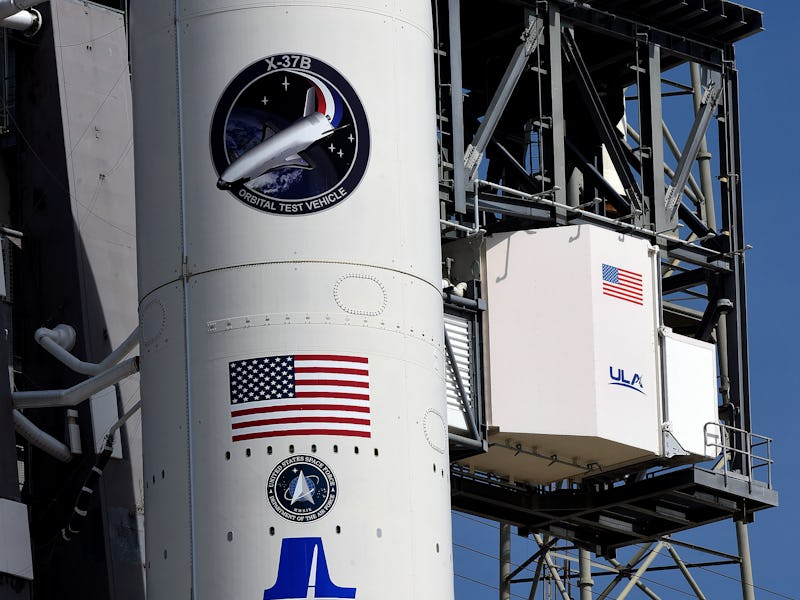The rocket taking Perseverance to Mars: Who makes it, how it works, where it's headed
Meet “America’s space workhorse."

When it finally reaches Mars, NASA’s Perseverance rover will make history in any number of ways. It will be analyzing minerals from the Red Planet’s soil looking for similarities to the building blocks of life on Earth.
But what about the rocket taking it there? Perseverance will launch on a United Launch Alliance rocket, an Atlas V. Here’s what we know about the company and the rocket that will help transform our understanding of Mars.
What’s taking Perseverance to Mars?
An Altas V-541 built by the United Launch Alliance.
What is the United Launch Alliance?
The United Launch Alliance, better known as the ULA, is an American launch service provider that was born in 2005 as a marriage of convenience between two giants of American military aerospace: Boeing and Lockheed Martin. Lockheed’s CEO at the time, Robert Stevens, described the company’s creation as necessary for the increasing number of space launches.
"It has become increasingly clear that an alliance of launch capabilities is essential to meet the space communications, surveillance and reconnaissance needs of the 21st century, and to assure access to space," he said at the time. "This combination will permit our national customers to achieve their mission objectives while reflecting current budget pressures and providing the government with full cost visibility."
The company, based in Centennial, Colorado, has tangled with the rising space industry, including SpaceX and Elon Musk, who called out the company’s rising costs.
But ever since Tory Bruno took over in 2014, the company has taken a more cost-effective approach. In 2016, it began offering “design your own rocket”-customizations for its rocket launches.
An RD-180 engine, with the original Cyrillic.
An American RD-180, prepping to carry a Boeing CST-100 Starliner into space.
What is the Atlas V?
The Atlas V is a rocket family that is older than the ULA itself. It stands at 191 feet high, with a diameter of 12 and a half feet. It's got a mass of 1,300,000 pounds. First launched in 2002, Atlas V is a two-stage rocket. The first stage is an RD-180 engine. The engine is designed and built by NPO Energomash, which is majority-owned by the Russian government, Derived from an older Soviet rocket line, the RD-180 is fueled by a combination of highly refined kerosene and liquid oxygen known as RP-1/LOX.
The second stage is known as the Centaur, which ULA describes as the “world's highest-performing upper stage.” Built around what’s known as a stainless steel “balloon tank” that’s thinner than a dime, it can carry over 41,000 pounds. On his prolific Twitter account, Bruno has called it “America’s space workhorse.”
That workhorse can carry between 18,190 and 45,240 pounds to low Earth orbit, and between 10,470–19,620 pounds to a geostationary transfer orbit, where satellites are placed.
What does its designation, Atlas V-541, mean?
The Atlas V is highly customizable, allowing customers to pick and choose their size according to their needs. ULA provides a handy key to what their rocket designations means:
The ULA's flight number key.
So, a V-541 means that it has a payload fairing size is five meters in diameter (16.4 feet, to be exact), has four solid rocket boosters, and is packing one Centaur engine.
The first stage of the Atlas V arriving at a vertical integration facility, where it will be fitted to mesh with the Starliner.
What comes next for the Atlas V?
The Atlas V, especially its RD-180 engines, have come under political pressure. As diplomatic tensions with the United States and Russia suffer, the RD-180 has become increasingly untenable.
But for now, the Atlas V has a number of launches ahead. After Perseverance, an Atlas V with solid rocket motors will launch a classified National Reconnaissance Office payload in September.
And after that, one of its parent companies will be using the Atlas V. In October, Boeing plans to use an Atlas V to test its reusable crew capsule, the CST-100 Starliner, for Boeing's turn at NASA's Commercial Crew Program. SpaceX's launch with the Crew Program was met with much fanfare, and Boeing is counting on the Atlas V to make sure the Starliner draws equal publicity.